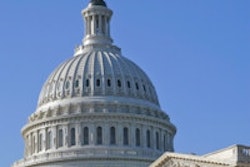Healthcare spending growth in the U.S. slowed dramatically over the past decade, to the point where it was in line with medical price increases in other developed countries.
That's according to a new study published online July 1 in the Lancet by researchers from the Organization for Economic Cooperation and Development (OECD). They compared U.S. healthcare spending growth to that of five other OECD countries -- Canada, France, Germany, the Netherlands, and Switzerland -- which were picked for their high levels of healthcare spending.
The researchers found that healthcare spending in the U.S. in 2002 was growing at a 7% annual rate, compared with 3% per year in the other five countries. But by 2011, healthcare spending in the U.S. was only growing at a 1% rate.
The declining growth rate in the U.S. was particularly notable because the U.S. started major reforms during the study period to expand healthcare coverage to a wider segment of the population, according to the report. The authors noted that 2011 was the first year since the economic crisis began in which the number of people in the U.S. without medical insurance fell, dropping by 1.3 million individuals.
Expenses such as hospital care and prescription drugs are believed to be the main drivers behind higher U.S. spending growth, the authors noted, citing progress the U.S. has made in reducing its disparity with other high-income countries.
The report warns, however, that many of the gains the U.S. has made are attributable to pricing dynamics, such as lower growth in physician reimbursement rates and the use of cheaper generic drugs. Therefore, an economic recovery in the future could reverse the progress in restraining medical spending.



















